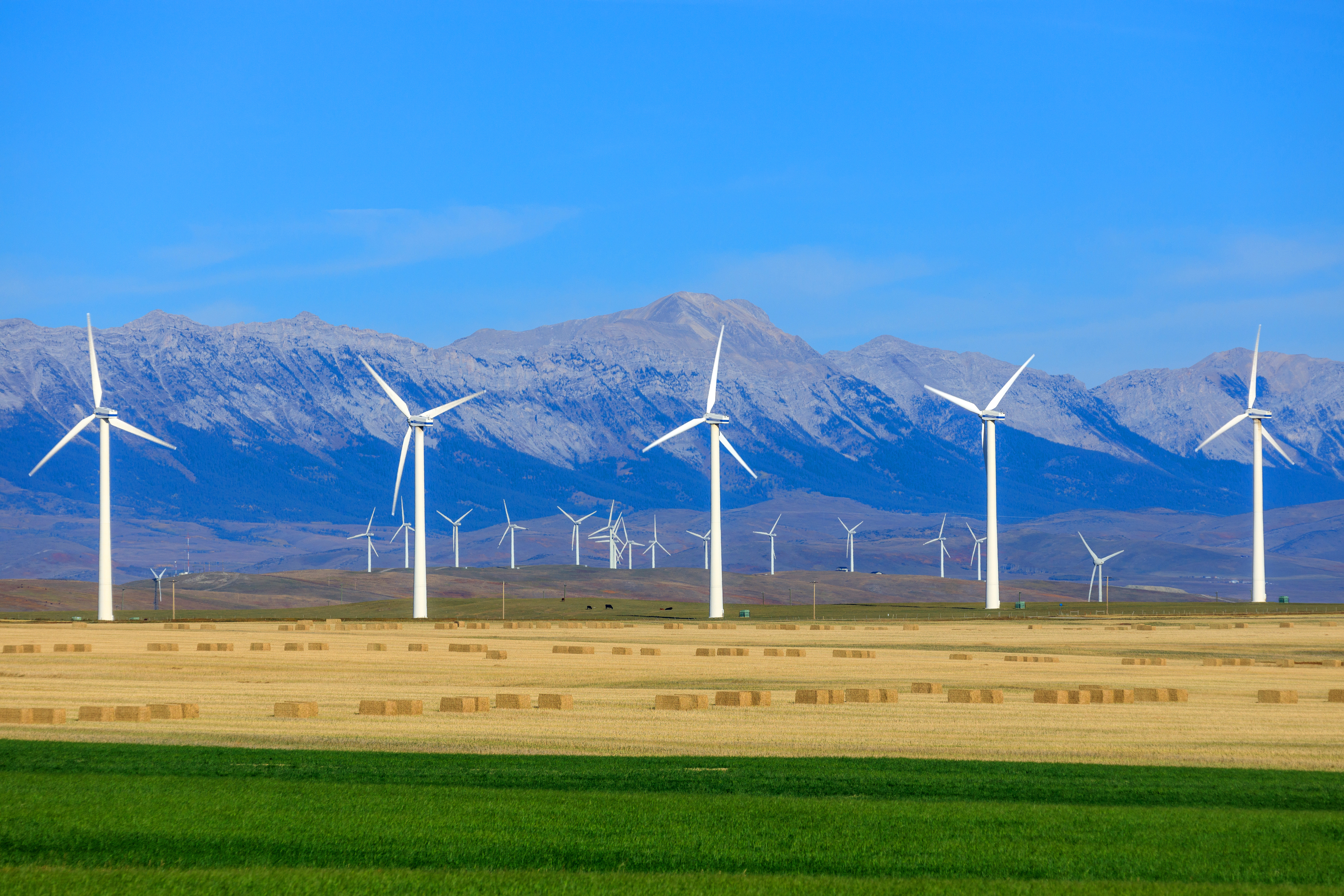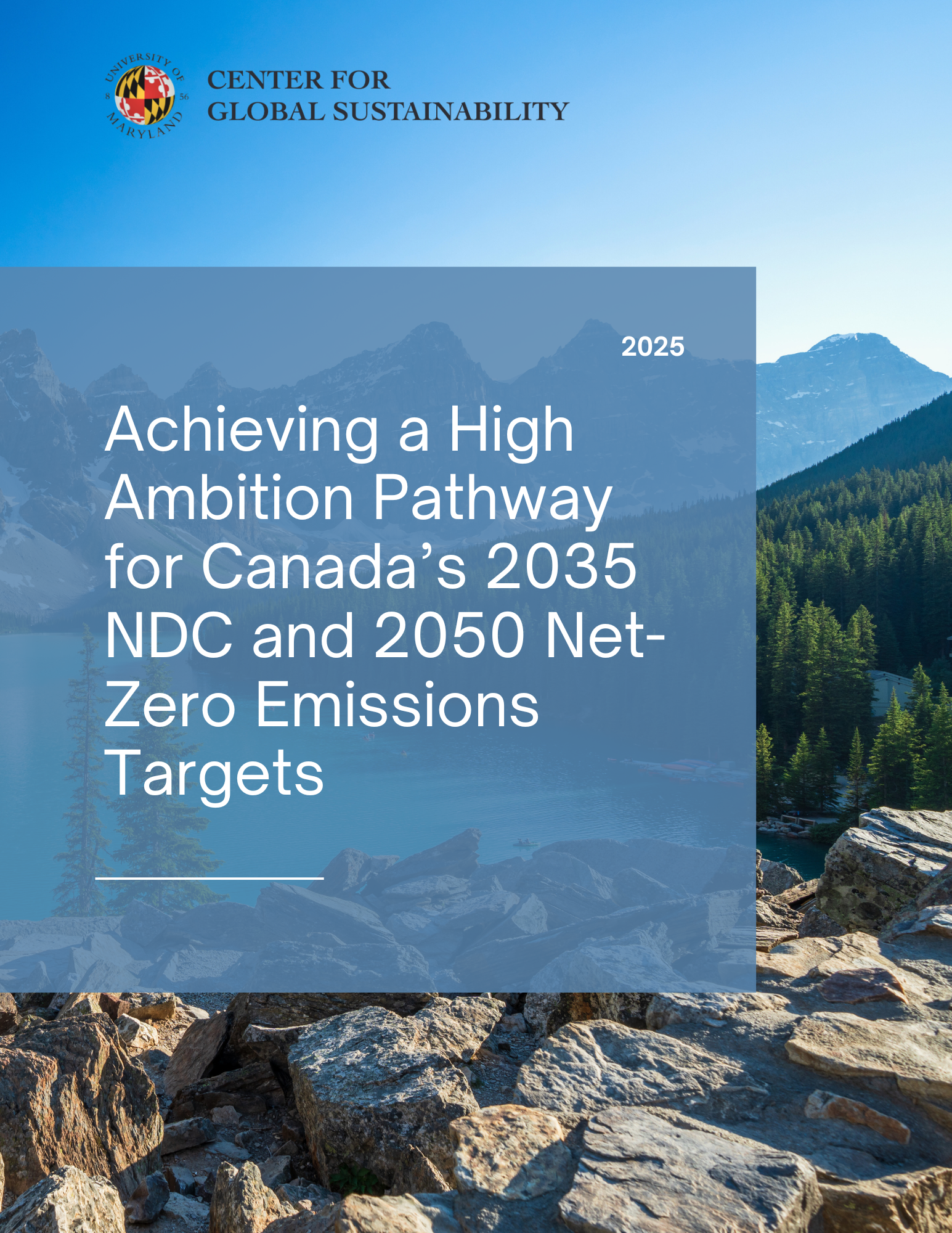Our High Ambition pathway for Canada shows a 58-62%ⱽ reduction in greenhouse gas (GHG) emissions (including Land Use, Land Use Change and Forestry (LULUCF)) from 2005 levels by 2035. For its Nationally Determined Contribution (NDC) targets, the government of Canada commits to reducing emissions (excluding LULUCF) by 45-50% by 2035 and 40-45% by 2030, both from 2005 levels, and to achieving net-zero GHG emissions by 2050.1,2 While the CGS High Ambition pathway is aligned with the 2030 target range, it exceeds the emission reductions expected under the 2035 NDC. Canada’s GHG emissions (including LULUCF) have already begun to decline, peaking in 2007 and falling by 11% by 2023.3 This decline is driven largely by reductions in the power sector, which have offset increasing emissions from fossil fuel production (both CO2 and CH4). Meeting its 2030 and 2035 NDC targets requires accelerating the average annual emissions reduction rate compared to that observed between 2007 and 2023.
Transport CO2, oil and gas production, and industry CO2 together account for more than half of total GHG emissions in Canada. While the country’s power sector is fairly clean, further decarbonization could lead to additional emission reductions in the short term. Progress towards mitigation efforts in the coming years will depend on how the federal government designates energy infrastructure projects. Expediting energy infrastructure projects could mobilize large-scale investment in clean energy and further advance Canada towards its NDC and net-zero goals. To achieve the High Ambition 2035 target, key mitigation strategies include: limiting oil and gas infrastructure expansion and significantly reducing its methane emissions; achieving 100% clean electricity through wind and solar scale-up; accelerating EV deployment; and implementing industrial decarbonization strategies.
ⱽ Recent analysis from CGS, “Achieving a High Ambition Pathway for Canada’s 2035 NDC and 2050 Net-Zero Emissions Targets“ uses a different baseline for 2005, and thus has a resulting different estimate of emissions reduction.
2035 Target: Total GHG Emissions Reductions
via CGS High Ambition Pathways
-58 to -62%
Relative to NDC Base Year
2005
Official 2035 NDC target
-45 to -50%
Official 2030 NDC target
-40 to -45%
Net zero target
2050
A High Ambition pathway for Canada shows a 58-62% reduction in total GHG emissions, including LULUCF, by 2035 from 2005 levels (Figure 1). In this pathway, emissions decline faster after 2025, reaching the net zero target by 2050, leading to a 44-48% reduction in 2030 and a 58-62% reduction by 2035 from 2005, or a 52-56% reduction from 2023. Under the Current Policies scenario, which reflects Canada’s existing federal climate measures, GHG emissions (including LULUCF) decrease gradually through 2030, with a slower decline after 2030, achieving 22-26% and 26-34% of emissions reductions by 2030 and 2035, respectively.
Canada’s GHG emissions, including LULUCF, have decreased by 11% from its peak in 2007 to 2023, with a sharp drop in 2020 followed by recovery and stabilization after 2022.3 Power sector emissions declined during this period, while emissions from fossil production (both CO2 and CH4) increased, accounting for 21% of total GHG emissions (including LULUCF) by 2022. Transport CO2 and industry CO2 contributed 22% and 15%, respectively.5 The 2030 and 2035 NDC targets of 40-45% and 45-50% reduction from 2005 levels imply a 35-40% reduction in emissions (excluding LULUCF) from 2023 to 2030, and a 40-46% reduction from 2023 to 2035. This corresponds to an average annual emissions reduction rate of 6-7% through 2030 and 4-5% through 2035. Our NDC calculation in Figure 1 is using historical data from PRIMAP-hist, not the national inventory, and thus might be slightly higher than other estimates.
Our deep-dive into Canada outlines how the power sector will likely play a key role in decarbonization,7 particularly through the One Canadian Economy Act, which received royal assent on June 26, 2025. This legislation grants the federal government significant unilateral power to assign infrastructure projects under the “national interest,” allowing for an expedited regulatory and permitting process.4 Additionally, this analysis highlights the importance of 2035 - since 2035 marks roughly the midpoint between Canada’s 2021 pledge and its 2050 net-zero emissions goal, progress by that year offers an indicator of how close the country is to meeting its long-term target. Under the High Ambition scenario, emission cuts between 2021 and 2035 are slightly higher than those expected from 2035 to 2050, while in the Current Policies scenario, much more effort is required between 2035 and 2050 to reach the net-zero goal.
As of 2024, 80% of Canada’s electricity generation came from non-fossil sources, with hydro accounting for 56%, nuclear for 14%, and wind and solar for 9% (Figure 2). Fossil fuels made up the remaining 20%, with gas contributing 16% and coal 4%.4 Further decarbonizing the power sector could lead to additional emission reductions in Canada in the short term.
Under the High Ambition scenario, 89% of Canada’s generation comes from renewable sources by 2035, achieved by maintaining hydro generation, accelerating solar and wind deployment, phasing out coal, and significantly reducing gas generation. Specifically, power sector transitions under the High Ambition pathway include:
- Increasing the share of solar and wind from 9% in 2024 to 33% by 2030 and 46% by 2035, accelerating wind and solar deployment from 2 GW/year in 2024 to 24 GW/year from 2025 to 2030 and 37 GW/year from 2030 to 2035.
- Increasing the share of non-fossil fuel generation to 89% by 2030 and 97% by 2035.
- Phasing out unabated coal by 2030.
- Reducing gas generation by 71% by 2035 from 2024 levels.
The oil and gas industry plays a significant role in Canada’s economy. In 2022, it accounted for 3.2% of GDP and 20% of national exports, while also serving as an important source of revenue for both provincial and federal governments.9 Under our High Ambition pathway for Canada, domestic coal demand declines by 74% by 2030 and 79% by 2035 from 2024 levels, while gas demand falls by 30% and 46%, and oil demand decreases by 32% and 46%, respectively (Figure 3).
Citations
- Government of Canada. Canada’s 2035 Nationally Determined Contribution. (2025).
- Government of Canada. Canada’s 2021 Nationally Determined Contribution under the Paris Agreement. (2021).
- Gütschow, J., Pflüger, M. & Busch, D. The PRIMAP-hist national historical emissions time series (1750-2023) v2.6.1. Zenodo
https://doi.org/10.5281/zenodo.15016289 (2025). - Ember. Electricity Data Explorer - Open Source Global Electricity Data. Ember (2025).
- Hoesly, R. et al. CEDS v_2025_03_18 Gridded Data 0.5 degree. Zenodo (2025).
- NGFS. NGFS Climate Scenarios for Central Banks and Supervisors - Phase V. The Central Banks and Supervisors Network for Greening the Financial System (NGFS) (2024).
- O’Keefe, K. & Nelson-Rowntree, X. Achieving a High Ambition Pathway for Canada’s 2035 NDC and 2050 Net-Zero Emissions Targets.
https://go.umd.edu/Canada2035Ambition (2025). - KPMG & Kearney. Statistical Review of World Energy, 73rd Edition. Energy Insitute
https://www.energyinst.org/statistical-review/resources-and-data-downloads (2024). - CAPP. Energy and the Canadian Economy. Canadian Association of Petroleum Producers (CAPP)
https://www.capp.ca/en/our-priorities/energy-and-the-canadian-economy/ (2024).
Our Work



